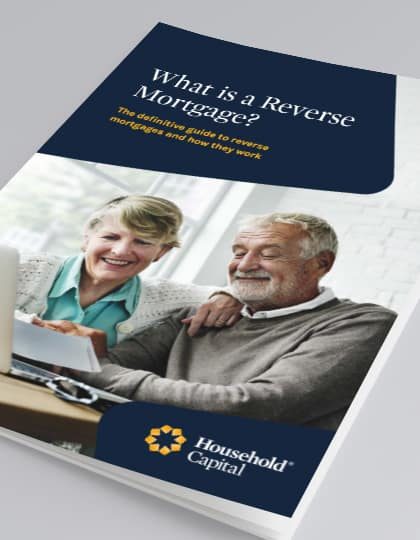Seniors Finance Options for over 60's
There are two main forms of seniors finance considered for older Australians who own their own home. The first is a line of credit, the second, a reverse mortgage. We’ll explore each of these options in more detail.
Line of credit
A line of credit enables you to borrow money using the equity built up in your home.
The lender will provide you with a pre-approved limit on a line of credit, which you can draw as a lump sum or as and when you need it.
A line of credit, sometimes referred to as a revolving credit facility, enables you to access capital up to your credit limit without having to reapply every time you need to borrow money.
While a line of credit provides flexibility, the trade-off is that lines of credit generally carry a higher interest rate than your everyday home loan, making it a seniors finance option.
How can I use a line of credit?
A line of credit can enable you to do a number of things, contingent on your credit limit. This could include:
- Undertake home renovations or modifications
- Buy a new car
- Take a holiday
- Pay for medical expenses
- Use a contingency fund for unexpected expenses
Before you take a line of credit, make sure you can meet the repayments. Remember – the more you use, the larger those repayments will be!
How much does a line of credit cost?
With a line of credit, you pay interest on what you’ve used of your available credit. There are generally established and ongoing account fees as well.
For example, if your line of credit was $100,000 and you used $20,000, your lender would charge interest on that $20,000. This interest is generally added to the loan each month.
Some lenders allow interest-only repayments, and most lenders allow you to make as many repayments as you like.
The following example is from one of the big four Australian banks offering a line of credit facility and looks at the cost of a $100,000 line of credit over 10 and 15 years. The example assumes the full line of credit has been drawn.
| Time | Interest rate* (p.a.) | Application fee | Ongoing fees | Monthly payment |
| 10 yrs | 6.01 | $600 | $150 p.a. | $1,117.52 |
| 15 yrs | 6.01 | $600 | $150 p.a. | $847.31 |
* variable rate
Source: Finder.com.au – accessed 5 May 2021
Reverse mortgage
A reverse mortgage is a loan specifically designed to meet the seniors finance needs of retirees. As with a line of credit, a reverse mortgage enables you to access the equity built up in your home. It can be a good option if a lot of your wealth is tied up in the value of your home, but you want to enjoy your retirement years living there.
As with a standard home loan, a reverse mortgage is secured by registering a first mortgage over your property. The primary difference between the two is that you don’t have to make regular repayments with a reverse mortgage.
As a result, the monthly interest compounds over time and increases the balance of your loan, unless you choose to make monthly interest payments. At the same time, you remain the owner of your home and reap the full benefit of growth in your home’s value.
How can I use a reverse mortgage?
There’s a number of ways you can use the home equity accessed through a reverse mortgage. These include:
- Increase your regular fortnightly or monthly income and improve your retirement lifestyle
- Improve your cash flow and relieve financial stress
- Create a contingency fund for those unexpected expenses
- Top up your super or other invested funds
- Renovate or modify your home to make it safe and comfortable for retirement
- Refinance a home loan or pay down debt
- Buy a new car
- Cover medical expenses
- Give to your children or grandchildren when they need it most
- Choose your own in-home care service and tailor it to meet your needs
- Cover the costs of transitioning to residential aged care
How much does a reverse mortgage cost?
With a reverse mortgage, you pay interest on what you’ve drawn from your home equity. There is generally an establishment fee, and some lenders may also change an ongoing fee.
Reverse mortgage lenders vary as to the interest rate charged on their reverse mortgage products, as illustrated in the following table.
Household Capital works hard to deliver the lowest rate we can to our customers...a lower rate means there is less interest compounding over time, which ultimately results in you owing less at the end of the loan and therefore retaining a greater proportion of equity in your home. See our Household Loan interest rates here
Try our equity calculator or call us on 1300 622 100 to see how using your Household Capital could improve your retirement income so you can stay safe and Live Well At Home.
Seniors Home Loans FAQs
Household Capital Pty Limited ACN 618 068 214 is the issuer of the information on this website. Household Capital Pty Limited ACN 618 068 214, Australian Credit Licence 545906, is the Servicer for the credit provider Household Capital Services Pty Limited ACN 625 860 764. HOUSEHOLD CAPITAL, HOUSEHOLD TRANSFER, LIVE WELL AT HOME and the Star Device are trademarks of Household Capital Pty Ltd
You may also like







